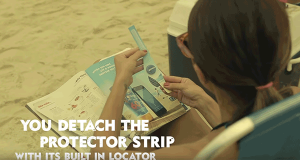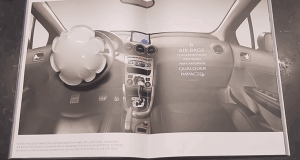So, print’s still alive. Now what?
We’ve been hearing for years that “print is dying”, “print is dead”, and “it’s all about digital now”. In reality, it’s just not the case. Print is still a viable marketing channel, provided it’s used in the right way. It’s worth noting that people used to say that radio would die out too.
Of course, the media landscape has evolved dramatically in recent years, but print publishing remains well and truly part of that ecosystem. Here’s why:
Digital saturation & tech fatigue
It may seem counterintuitive, but while the balance of advertising spend tips further in favour of digital, this opens up more opportunities for effective print marketing. In fact, digital advertising has arguably reached a point of saturation that dilutes its power to engage.
The way we interact with digital devices doesn’t lend itself to patience. Users want to navigate to the content they’re looking for as quickly as possible, without obstacles. In many cases, online ads can be blocked, skipped, or swiped past. Even where online ads do appear, it tends to become background noise that’s easily tuned out.
Digital marketing has become such a crowded, competitive arena that it can often feel like more effort than it’s worth. Indeed, there’s data backing this up. Independent studies in 2018 suggested that marketers who prioritise digital advertising have delusions of its effectiveness.
This is partly due to the online community becoming more and more savvy when it comes to online marketing tricks. Even native advertising and clickbait is less effective now that we know how brands try to capture our attention online.
A phenomenon known as ‘tech fatigue’ is on the rise among Gen-Y consumers. The stereotype of young people glued to their digital devices may be accurate, but it means many of them are prone to burnout from doing so. In response, they’re increasingly putting down their devices and seeking out the experience, nostalgia and privacy of analogue reality. Older generations might scoff at this kind of ‘awakening’, but marketers would do well to be ready for the unplugged masses.
The revival of ‘traditional’ advertising
It’s wrong to say that print advertising is back, because it never really left. That’s largely due to industries that remain heavily reliant on paper such as real estate, legal firms, local restaurants and so on.
Firstly, there’s the impact of being able to physically hold something in your hand. It’s more compelling than a small digital ad, or something getting in the way of the YouTube video you’re about to watch. It’s an opportunity for readers to interact with the ad in a unique way.
“Print is huge for us. There’s something to be said for the tangible beauty of turning a page,” said Jess Gill, Customer Experience Manager at Woolworths.
Direct mail is hugely underrated, especially among young audiences. Data shows that 77% of millenials pay attention to direct mail advertising – perhaps due to the novelty of physical printing, or an early sign of the aforementioned tech fatigue rebellion.
Print marketing: serving suggestions
Okay, so digital may not be the silver bullet that marketing departments might have hoped for, but it needn’t be a case of one or the other. Your print and digital campaigns could be integrated and complementary.
Also, just because print marketing is considered a more traditional medium doesn’t mean you have to adhere to tired marketing tropes. Be creative. Be innovative. Take what you’ve learnt from the digital world and put it to use in a different context.
So, how can print be used creatively in a multimedia landscape?
Nivea won the Mobile Grand Prix at Cannes in 2014 with an ad that included a wristband for your child to wear at the beach. The wristband was linked to an app on which you could set a fixed radius. If your child wandered outside the limit, the app would send you alerts. With a simple, practical activation, Nivea linked sun protection with child safety in general.
In 2011, Peugeot wanted to promote the safety features of its new 408 model. A single page ad with a front-on image of the car asked readers to hit the car, hard. Who could resist? The impact triggered a mini airbag to inflate on the next page, revealing a spread of the stylish interior, complete with airbag in place.
Even if your approach doesn’t involve an activation element, you should always be thinking of ways to cut through with your language and graphic design. Creativity and originality, in any form, will always be hard to ignore.
In summary…
Having weathered the digital storm, print is here to stay as a viable and effective marketing channel. It remains a crucial platform for a number of industries, with the potential for greater engagement when paired with a strong digital strategy.
The moral of the story is that there’s no one-size-fits-all marketing approach out there. Every business is different, while the media landscape and whims of your target audience will continue to evolve over time.
To engage a broader audience, it makes sense to take an integrated approach of both print and online channels, informed by digital insights, to capture the best of both worlds.
For all your printing needs, check out Kwik Kopy’s printing services or request a quote today.








